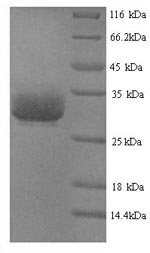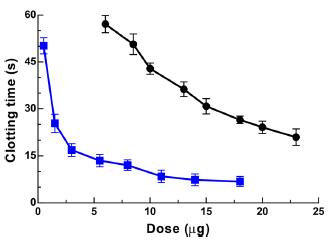The recombinant Calloselasma rhodostoma Thrombin-like enzyme ancrod (SVTLE) is a yeast-expressed (1-234aa) protein with N-terminal 6xHis tag. The purity is 90%+ measured by SDS-PAGE. The highly developed genetic system, ease of use, reduced time input, and costs have made Pichia Pastoris an attractive organism for the expression and production of recombinant proteins. So we choose the Yeast system to express this recombinant Thrombin-like enzyme ancrod (SVTLE) protein, which is able to carry specifically designed plasmids, and the plasmid used consists of restriction sites that can be used to insert the gene sequence of interest. Transformation of yeasts with the plasmid produces the desired protein and can be appropriately scaled up.
Ancrod is a thrombin-like enzyme that induces rapid defibrinogenation in humans by splitting fibrinopeptide A from fibrinogen. Ancord was developed for the treatment of ischaemic stroke and myocardial infarction as well as deep-vein thrombosis. In addition to reducing fibrinogen, ancord also lowers blood viscosity, suppresses erythrocyte aggregation, indirectly stimulates thrombolysis, and possibly leads to vasodilatation. It also possesses a weak anticoagulant activity at high dosages.







